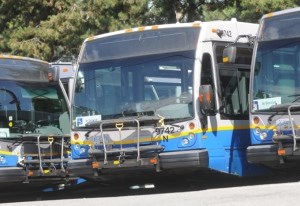Editor:
An open letter to TransLink:
We wish to register our objections to both your public engagement process and the proposal itself.
In your first round of public engagement, you did not ask the public’s opinion whether the public believed a gondola to be a good idea. Instead, you only asked those surveyed to choose among three possible gondola routes. This, despite that fact that Trans Mountain has, in essence, told you that route #3 is a “no go” because it is too close to the Trans Mountain tank farm. We understand the second round of public engagement tries to address the first stated concern.
We are dismayed that both your public engagement processes compare the pros and cons of an aerial gondola to SFU with the obsolete diesel bus system when you are already running compressed natural gas (CNG) buses to SFU. You assert your current bus service to SFU is too infrequent, too slow and too unreliable. You also state that your current bus service will not be able to meet future growth in ridership to SFU/UniverCity.
You state that under the current diesel bus system, people travelling to the top of Burnaby Mountain during rush hour sometimes see four full buses go by before they can get on a bus. This would not be so bad if you ran one bus after another, but you do not do that.
According to TransLink, the average length of time for a bus trip from Production Way SkyTrain station to SFU is 15 minutes. It seems like you are measuring the time from Production Way SkyTrain station to the last stop at SFU although most students get off the bus before the last stop. Using your data, you state that a gondola would reduce the trip to SFU from 15 minutes to six minutes. What allowance do you make for foot travel time under either bus or gondola options?
TransLink’s stated goal is to purchase only battery-electric vehicles for your bus fleet starting in 2023. Why, then, have you not compared the aerial gondola proposal with electric buses? You state that your current bus service is unreliable in that the diesel buses stall on snow and ice during winter, but experts tell us that electric buses would have absolutely no problem going up the incline to SFU.
In fact, experts assert that electric buses, like Proterra, would manage the incline much better than diesel buses, and that they do very well in winter if the motor controllers have slip control and you put winter tires on the buses. In addition, you should require SFU to maintain its portion of the roadway in winter (which it should be doing anyway for those who travel to SFU by bicycle or car).
You have touted the proposed gondola as environmentally friendly technology. Electric buses, with their ability for regenerating energy as they go downhill, also constitute environmentally friendly technology. The difference is that electric buses can use the existing road to SFU, whereas a gondola would create a new incursion into the Burnaby Mountain Conservation Area and the Burnaby 200 Conservation Area within Forest Grove (although TransLink ignores the Burnaby 200 Conservation area in their assessment).
Trans Mountain’s tank farm operation next to the Burnaby Mountain Conservation Area, Gaglardi Way and people recreating in the BMCA are probably the most significant human impacts on the Conservation Areas at this time. Why would you add an aerial gondola over two Conservation Areas, yet another human impact, if that is not necessary?
You state that the main reason for proposing an aerial gondola is that “it would improve the current transportation experience.” People all over Metro Vancouver are waiting for improved transportation experiences. They are hoping for more frequent bus service, covered bus shelters, public washrooms and more user-friendly transportation spaces (the Production Way bus interchange being an example of a cold, dank and depressing transportation space). Is $250 million for gondola infrastructure alone (excluding operating costs) the best use of taxpayers' money?
If you were to operate electric buses up to SFU, transportation to and from SFU and UniverCity would remain in the public transit system.
On the other hand, it has been suggested that if the gondola proposal is approved, it might have to be built with public funds but operated privately. Would the cost of travelling by gondola to SFU or UniverCity be as affordable for customers in the long run as a publicly operated electric bus system? Would the cost be worth that possible nine minutes saved?
Lastly, we support the concerns of Forest Grove residents (not just those in the two multi-unit residential complexes that would be right under the gondola) and UniverCity residents who, for different reasons, do not want an aerial gondola.
In Forest Grove, a significant concern is that an aerial gondola over the neighbourhood would create an unwanted visual element that would diminish the conservation like setting where we live. We understand that the opponents who live at UniverCity do not want to attract people to SFU/UniverCity who have no reason to be on the mountain and may become a detriment to the community.
We appreciate the opportunity to provide feedback.
Glen Porter, Jennessa Kilroe and Christine Cunningham, Burnaby



